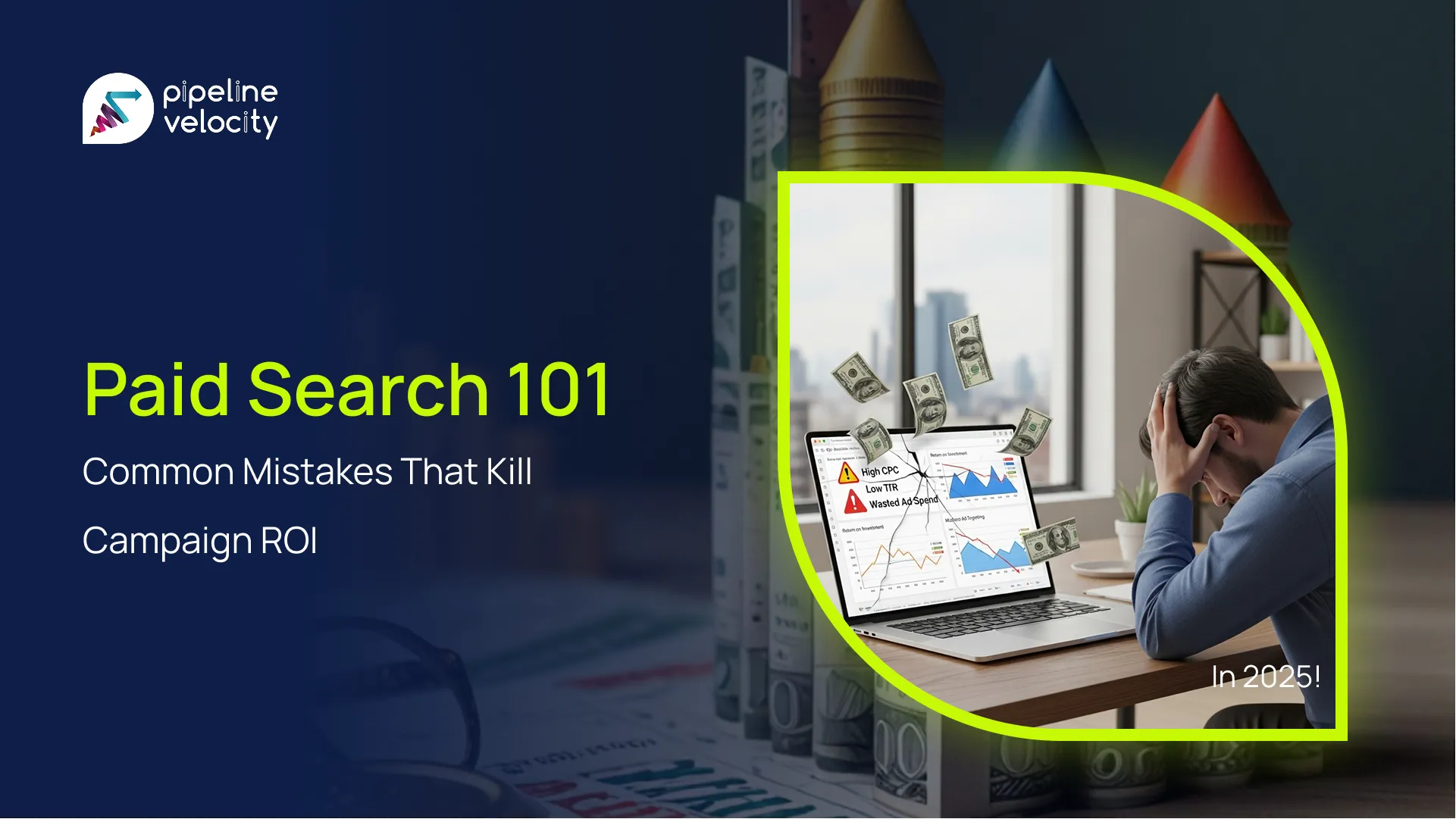Working with an appropriate marketing budget for your business is an essential factor that has significant consequences on the expansion of your company. Yet, the central difficulty is how much revenue should be allocated for marketing. This article provides a complete manual for firms of all measures to tackle the rugged terrain of marketing expenses. By the end, you will know how to develop a strategic budget that enables you to maximize your advertising efforts and maintain a healthy bottom line.
Why Partner With Pipeline Velocity?
Our services at pipeline velocity focus on turning every marketing dollar into measurable growth. Clients who rely on our PPC management and SEO services see stronger lead quality and shorter deal cycles. We blend creative storytelling with data discipline through social media marketing, and our CRM management service connects every campaign to revenue. For deeper insights, explore our Generative Engine Optimization guide that outlines AI search tactics.
How Much Of Revenue Should Be Spent On Marketing
Your budget is way more than a number on the spreadsheet. It’s a strategic move that affects how visible your brand becomes to potential buyers and thus influences your revenue generation. When you allocate resources to marketing effectively, you can expect to see:
- Increased Brand Awareness: People recognize your brand as a result of marketing efforts and are likely to purchase the products or services whenever an opportunity presents itself.
- Lead Generation: Potential customers are attracted to your business by marketing activities that convert them into leads and sales opportunities.
- Customer Retention: Good marketing ensures you retain your existing customer. The current customers generate more profit than bringing in new clients.
- Revenue Growth: Marketing done well can boost sales and revenue significantly, promoting business growth.
- Competitive Advantage: Effective marketing approaches will make you outshine your competitors in an overcrowded industry.
Step-by-Step Analysis – Determine the Right Marketing Budget
On the other hand, setting the proper marketing budget is not a matter of “one size fits all.” This depends on industry, business size, goals, and various other factors for each business. Now, it is time to go deep into finding a correct marketing budget that will be tailored to your circumstances.
Step 1: Assess Your Business Goals
Understanding the goals of your business is the first and the most essential step in building your marketing budget. Marketing objectives should resonate perfectly with your corporate strategy. Typical goals might include:
Increasing brand awareness.
Boosting website traffic.
Generating leads.
Growing sales and revenue.
Expanding into new markets.
Enhancing customer retention.
To introduce a new product/service.
Step 2: Consider Your Industry Benchmarks
Although no burdensome regulations are dictating the proportion of revenue that goes into marketing, some industry trends can help you in your quest to arrive at viable marketing costs that will be within your means. Market competition and consumer acquisition costs determine the proper marketing budget in different sectors and markets.
Find out about current research industry standards and averages to examine how similar firms behave. For example, some firms operating in very competitive markets may dedicate more of their budgets to marketing. However, small budgets will suffice for firms with little competition in niche markets. Therefore, they can be used as a basis while developing your budget. Resources such as the Small Business Administration (SBA) guide provide helpful benchmarks.
Step 3: Analyze Your Current Revenue
The amount of money you can receive today is one of the components to consider for your budgeting. The IRS guide to business expenses generally recommends that small companies with less than $5 million in revenue invest about 7–8% of their income into marketing. On the other hand, this number can vary depending on where you are in your business development, sector, or growth goals.
Startups and growing businesses should consider allocating more revenue to marketing as a growth enabler. On the other hand, more developed firms with loyal customers may budget a lesser share.
Step 4: Define Your Customer Acquisition Cost
Simply put, you need to know CAC accurately for this marketing budget to be spent enough. CAC refers to how much you pay for each acquisition of your product or service. CAC is arrived at by dividing your total marketing and sales expenditure by the number of new customers acquired.
If you buy marketing and sales for $10,000 per month, consider 100 additional customers. Your CAC is $100. In this way, you are now in a position to determine how much cash you need to convince particular customers to follow your objectives within that stipulated budget.
Step 5: Explore Various Marketing Channels
This often involves a mix of multiple channels and methods working together effectively. These can include:
Digital marketing: There are various forms of this technique, including social media marketing, pay‑per‑click adverts, content or email marketing, and search engine optimization.
Traditional marketing: The conventional techniques include but are not limited to the use of print advertisement, radio and TV adverts, direct mail, as well as the use of publicity.
Event marketing: The marketing strategy could involve participation in hosting events such as trade shows, webinars, and conferences.
Content marketing: For instance, you may produce relevant content like blogs, videos, infographics, and whitepapers through which you can get leads by attracting organic traffic.
Social media marketing: Conveying messages to your targeted group through social media networks such as Facebook, Instagram, LinkedIn, and Twitter.
These are the costs and the expected returns of each marketing channel. They determine the most appropriate avenues to connect, talk to, and get the audience working towards your set objectives.
Step 6: Calculate Your Marketing Budget
You now have the data for calculating the amount for your marketing budget and how much revenue should be spent on marketing. Here are two standard methods:
Percentage of Revenue Method: This approach involves deducting some portion from your salary to the marketing team for marketing purposes. However, the percentage is dependent upon your business phase and industry. For example, assume that your company’s annual turnover is $5m and you chose to earmark the tenth portion for advertisement; this would be equivalent to $250k.
Objective-Based Method: This makes sure that your budget is linked to your marketing objectives directly. For instance, if you expect your website traffic to increase by 50%, the amount required would be the working-out issue. These may include expenses of SEO, content creation, and online advertising.
It is always good to note that your marketing budget should always be flexible and adjustable. Nevertheless, some amendments should be made occasionally based on the firm performance, fresh revenue methods, altered market scenarios, and developing business goals.
Step 7: Monitor and Adjust
Marketing is always ongoing, and one of its aspects is the formation of a budget. It is a continuing process that must be checked upon and modified frequently to remain operational. Regularly assess the efficiency of your marketing campaigns for each dollar invested. For advice on honing tactics, see our post on optimizing your website for ChatGPT.
Wherever you regularly have great returns through a channel or strategy, deploy significant resources there. However, you should assess if a poor campaign requires an adjustment or a shift to another medium.
At Pipeline Velocity, We Help You Maximize Every Dollar
At pipeline velocity, we help you connect every line item in your budget to a clear revenue outcome. Our strategists dig into funnel data, then recommend a blend of web design and development and campaign tweaks to tighten conversion paths. The result is a streamlined customer journey that wastes zero clicks. We also build dashboards that surface ROI in real time, so pivots happen before dollars drift.
Conclusion
It is not a simple task to determine how much revenue should be spent on marketing for business because of different factors such as goals, standards within the sector, cash sources, prospective customers’ expenses, and marketing channels. However, no defined percentage of your revenue should go towards marketing activities, but having a structured budget can be very important in achieving your company goals.
Frequently Asked Questions
Q1: How much of my revenue should be allocated towards marketing?
A1: The ideal percentage of revenue allocated towards marketing varies across industries but generally falls between 5% to 10%. However, business size, goals, and competition should also be considered when determining the appropriate marketing budget.
Q2: Can I allocate a higher percentage of revenue towards marketing for better results?
A2: While it’s possible to allocate a higher percentage of revenue towards marketing, it’s essential to maintain a balance that aligns with your business goals. Increasing marketing spending can lead to increased brand exposure and potential growth, but it should be done strategically to achieve a positive marketing return on investment.
Q3: What happens if I allocate too little of my revenue towards marketing?
A3: Allocating too little of your revenue towards marketing may result in limited brand visibility, reduced customer reach, and stagnant business growth. Marketing plays a vital role in attracting new customers, retaining existing ones, and staying competitive.
Q4: How should I determine the proper marketing budget for my business?
A4: To determine the right marketing budget, evaluate your business goals, industry benchmarks, and competitors’ strategies. Consider factors such as business growth objectives, target audience, marketing channels, and the ROI potential of various marketing initiatives.
Q5: Can I adjust my marketing budget based on the success of previous campaigns?
A5: Absolutely. Analyzing the performance and ROI of previous marketing campaigns can help you identify what efforts were successful and where adjustments can be made. By tracking results and making data-driven decisions, you can optimize your marketing budget allocation for future campaigns.




